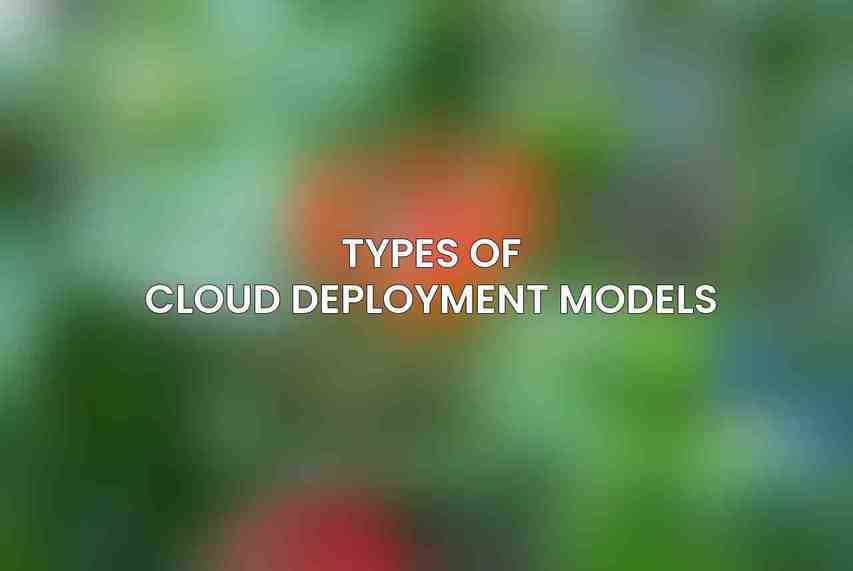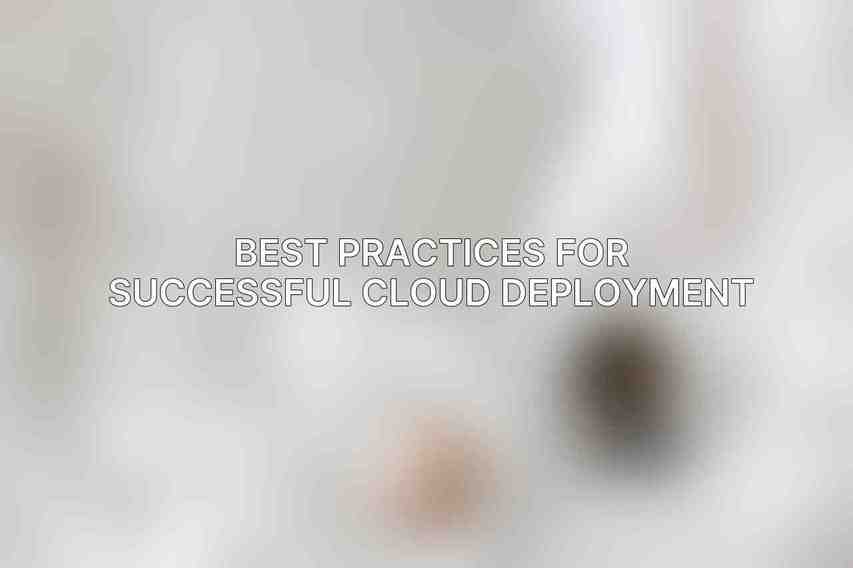The utilization of cloud deployment models has become a cornerstone for businesses seeking to enhance their digital infrastructure. cloud deployment models refer to the way cloud computing resources are made available to users, dictating factors such as control, security, and scalability. Understanding the nuances of these models is crucial for organizations aiming to optimize their operations efficiently.
Choosing the right deployment model is essential as it directly impacts the performance, security, and cost efficiency of a business’s IT infrastructure. By aligning the specific requirements of an organization with the most suitable cloud deployment model, companies can unlock a myriad of benefits and drive business growth effectively.
Types of Cloud Deployment Models

A. Public Cloud
The public cloud is a model where cloud services are provided over the internet by a third-party provider. This model offers cost-effectiveness and scalability as resources are shared among multiple users. However, security concerns and limited control over data placement are common drawbacks. Leading public cloud providers include AWS, Azure, and Google Cloud Platform.
B. Private Cloud
In contrast, a private cloud is dedicated to a single organization, offering enhanced security and greater control over data and processes. While providing increased data protection, the higher cost and limited scalability are considerations. Examples of private clouds include on-premises setups and hosted private clouds.
C. Hybrid Cloud
A hybrid cloud combines elements of public and private clouds, allowing data and applications to be shared between them. This model provides flexibility, scalability, and security, although complexities in integration and management can arise. Implementation scenarios include connecting a private cloud to public cloud resources.
D. Community Cloud
The community cloud is shared among several organizations with common concerns, such as regulatory requirements or security protocols. This model offers shared resources and cost reduction benefits, but may have limitations in customization and pose potential security risks. Examples include industry-specific cloud environments tailored for particular sectors.
Factors to Consider When Choosing a Deployment Model
When selecting a cloud deployment model, various factors must be taken into account to ensure optimal alignment with the organization’s needs: Dive deeper into Top Strategies for Public Cloud Deployment: Expert Tips & Tricks
- Security requirements: Assess the level of data sensitivity and regulatory compliance needed.
- Performance needs: Consider the speed and reliability requirements of applications running in the cloud.
- Budget constraints: Evaluate the financial implications of different deployment models.
- Compliance regulations: Ensure adherence to industry-specific regulations and standards.
- Business objectives: Align the deployment model with the strategic goals and growth plans of the organization.
Best Practices for Successful Cloud Deployment

To achieve successful cloud deployment, organizations should adhere to the following best practices:
- Plan and design thoroughly: Outline clear objectives and architecture before implementation.
- Secure the environment: Implement robust security measures to protect data and applications.
- Monitor and manage continuously: Regularly monitor performance and address any issues promptly.
- Optimize performance and costs: Fine-tune resources to enhance efficiency and reduce expenses.
- Upskill and train staff: Equip teams with the necessary skills to manage and optimize cloud deployments effectively.
Emerging Trends in Cloud Deployment
As technology continues to advance, several trends are shaping the world of cloud deployment:
- Multi-cloud and hybrid cloud adoption: Organizations increasingly leverage multiple cloud providers and hybrid models for diverse needs.
- Serverless computing and cloud-native applications: Embracing serverless architectures and cloud-native approaches for enhanced agility and scalability.
- Edge computing and IoT integration: Utilizing edge computing to process data closer to its source, particularly in IoT applications.
- Cloud security and compliance automation: Implementing automated tools for enhanced security and regulatory compliance in cloud environments.
By staying abreast of these trends and continuously evaluating deployment options, businesses can adapt to the evolving cloud world and optimize their IT infrastructure effectively.
Frequently Asked Questions
What are the different cloud deployment models?
The main cloud deployment models are public, private, hybrid, and multi-cloud. Each has its own set of benefits and considerations.
How does a public cloud deployment work?
In a public cloud deployment, resources are owned and operated by a third-party provider, and users share these resources over the internet.
What is a private cloud deployment?
A private cloud deployment involves dedicated resources for a single organization, providing greater control and security compared to public cloud options.
Can you explain hybrid cloud deployment?
Hybrid cloud deployment combines elements of both public and private clouds, allowing organizations to take advantage of the benefits of each.
What is multi-cloud deployment and how does it differ from other models?
Multi-cloud deployment involves utilizing multiple cloud providers to achieve redundancy, avoid vendor lock-in, and optimize performance and cost.

